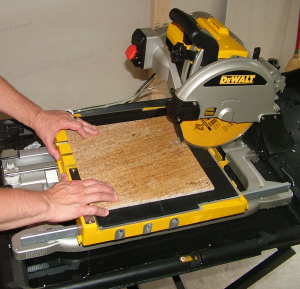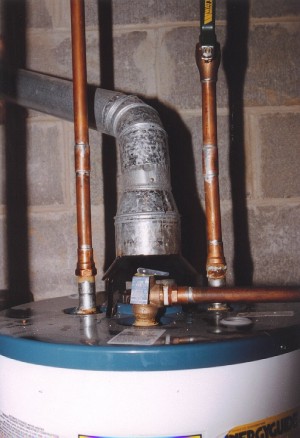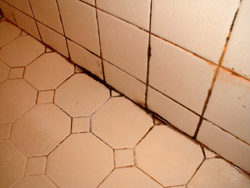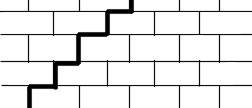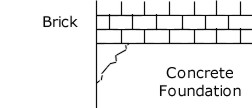DEAR TIM: I have a problem and I hope you may have some insight. I have undertaken the repair of a home in Mississippi which, during Hurricane Katrina, sustained 5.5 feet of water. Subsequently, the tongue and groove hardwood flooring and the laminate flooring were both removed. This removal was prior to my taking this job. What I found, when I made my initial inspection, was a concrete slab floor that, at one time, had 2x4s laid in a chaotically random fashion all across the slab and hot-mopped tar was then spread thickly between all 2x4s and even under some of the 2x4s. The team that removed the flooring also removed all the 2x4s and now there is tar up to 3/4" thick with spaces of concrete where most of the 2x4s used to be. This is no small problem, we are talking about a 2000 sq. ft. home.
I am receiving reports of how some contractors in this area are dealing with this dilemma. I am not completely certain that the most prevalent solution will stand the test of time. It has been reported to me that some contractors are first laying down a layer of tar paper over the tar, slab and lapping up onto the sole plate. Secondly, they are pouring concrete to a level even with the top of the wall's sole plate.
There is one possible fly in the ointment. I have noticed that when an object of any weight is laying on the tar for an extended period of time, it sinks into the tar. Although the tar appears brittle, and indeed is brittle in some places, this is not consistent over the entire surface. I am not confident that this over coating remedy is a long-term solution.
When I walk away from this job, I want to know it's right. I would appreciate any and all help in finding a definitive solution. What is the "true" step-by-step method to follow in this situation? Paul Early, Pascagoula, MI
DEAR PAUL: First, I want to say it is an honor to meet a contractor who has a stellar attitude about long-lasting quality workmanship. You are to be commended. I subscribe to several fine building and remodeling trade magazines and the first thing I always read are the Letters to the Editor. The reason is simple. Each issue some contractor always takes exception to a construction method described in a past issue of the magazine. Often the solution put forth in the letter is equal to or better than the original article. The longer I am in this business, the more I have come to realize there are many ways to efficiently skin a cat. With this in mind, my method may not be the Holy Grail you are seeking.
The hot mopped asphalt was undoubtedly a crude, yet effective vapor retarder. The water table in the deep South part of the USA is just about as high as it can be and concrete slab houses without any protection would readily wick water and water vapor up into homes.

CLICK this image and listen to the first call on the podcast. I talked to Jill about how to repair wood kitchen flooring, and possibly installing an inlay border as an option. Copyright 2018 Tim Carter
Today, when great builders like you build new slab homes, high-performance vapor retarders can be installed under concrete slabs. These newer products block a vast majority of water and/or water vapor from moving up into the finished living space.
Your observation of the asphalt is right on target. Asphalt is one of the wacky substances that is neither a solid nor a liquid. It is something in between, because it absolutely will flow in response to the pull of gravity. Some pieces of glass act the same way. Old, vertical panes of glass around the world in some buildings are often thicker at the bottom than at the top as the glass molecules are pulled down by gravity.
The best way to solve your problem is to remove the asphalt. But, this will be a significant challenge. If you get the asphalt very cold, it will become extremely brittle and can be chipped away. One way to get it cold quickly is to slide a block of dry ice over the asphalt and have a second person immediately chip away before the asphalt heats back up. Even if you remove most of it, but not all of it, you will be miles ahead.
Be sure to keep windows and doors wide open as you work with dry ice inside a home. As the dry ice sublimates, it produces clouds of invisible carbon dioxide which can kill you or any other living thing in the house.
The concrete overlay method will work very well if you can remove most of the asphalt. If you can't remove any of it, it will probably still work well. The asphalt moves now when you put something heavy on it because the asphalt has a place to move to. The concrete overlay will block the sideways movement of the asphalt and only allow it to move up. I doubt this will happen, especially if the minimum thickness of the concrete overlay is 3/4-inch thick.
Instead of laying tar paper over the slab, I would use one of the high-performance vapor retarders that meets the ASTM E standard E 1745. Be sure to tape any seams and take your time installing the concrete overlay. I urge you to use small pea gravel in the concrete mix for maximum strength.
Column EM0006
